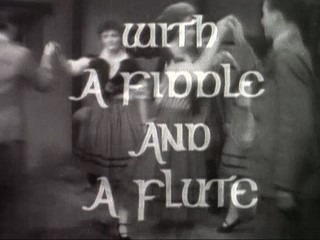Some think Irish dance is similar to tap dancing and although there can be some similar characteristics, the style and rules of Irish dance are extremely different. It is a very distinctive form of dance that requires athleticism and flexibility. What makes Irish dance so different is the form and music.
Body Posture
What makes Irish dance so recognizable is the strictness of body posture with arms at the sides and hands in a specific fist. Irish dancers will train their upper bodies by dancing with pads squeezed between the arm and the side of the torso. Irish dancer's should have the body of ice and feet of fire. With knees staying close together and feet always crossed and turned out, the art of Irish dance is strict and powerful. Rarely do dancers leave this position unless it is to perform a graceful soft shoe or Irish ballet dance.
Music
The melodic fiddle and the flute are the most popular combination of instruments in Irish music although Irish dancers can dance to anything. However, the three most popular forms of Irish dance music follow the reel, jig, and hornpipe.
Reels, Jigs, and Hornpipes
There are different kinds of Irish dance that match the different styles of music. The most common is the reel and most modern music and pop songs follow the same metre as the reel. The reel follows 8 bars (counting 1 through 8) and the time signature is 4/4 meaning there are 4 beats to every bar. The jig also follows an 8 bar but the time signature is 6/8 meaning there are 6 beats to every bar. The hornpipe, instead of counting 4 beats per bar, there is an emphasis on the first and third beat, giving a bounce feel (
1-2-
3-4,
1-2-
3-4).
Like I said, Irish dance is unique and maybe now you can see why. There are so many different layers to it between the different style and techniques and the variability of dance moves. Keep on the lookout for future blog posts about the fun yet incredibly difficult moves Irish dancers learn and master.


